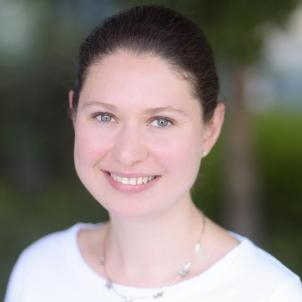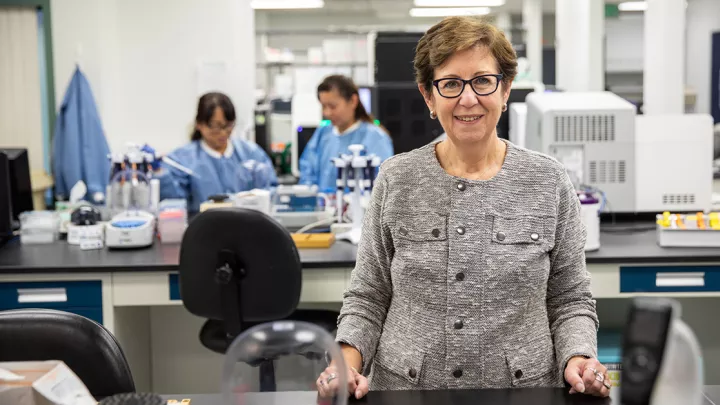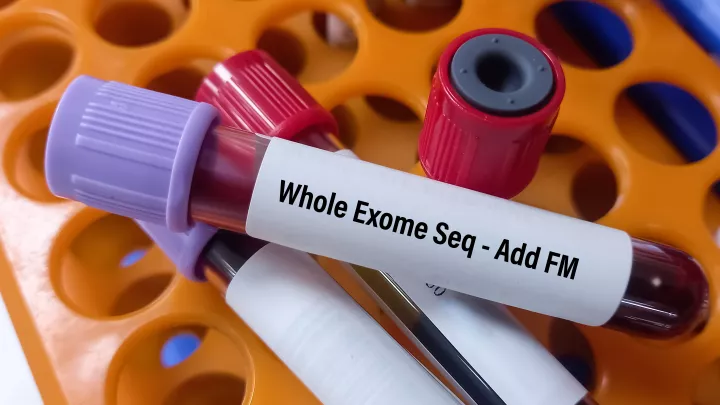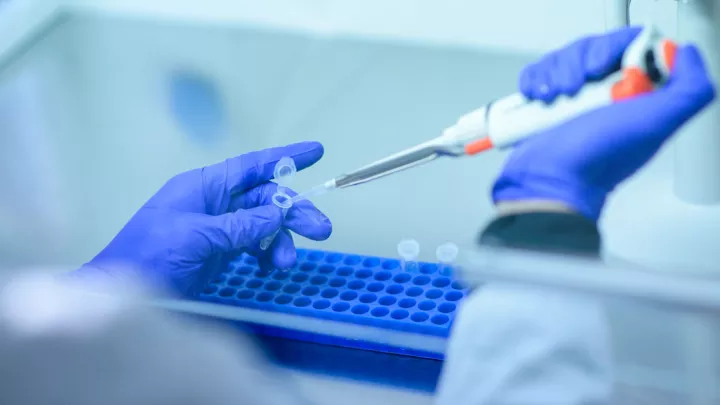
Children’s Hospital Los Angeles Team Finds New Potential Causes of Rare and Lethal Bone Cancer
Little is known about the genetics and biology of chordoma, a rare and aggressive bone tumor. Chordomas occur in approximately one in a million people in the U.S. a year and only five percent of these are in children. These tumors can arise anywhere along the spine in adults. However, in children these tumors occur mostly at the base of the skull, making complete surgical removal challenging or impossible. Any tumor remnants are treated with high doses of radiation—which can cause significant damage to the developing brain.

A team of researchers led by Xiaowu Gai, PhD, and Jaclyn Biegel, PhD, FACMG, at the Center for Personalized Medicine at Children’s Hospital Los Angeles, has recently published a genomic study that uncovered two classes of genetic causes for chordoma in children by conducting some genomic detective work. “Finding the causes driving the different subtypes of chordoma could lead to the development of better treatment strategies for children,” says Katrina O’Halloran, MD, MS, pediatric neuro-oncologist and first author of the study. “Prior studies have been conducted primarily in adults and we know that children’s tumors can present and behave differently.” For example, pediatric solid tumors are more likely to be driven by underlying germline changes—alterations that can be passed on to future generations—that increase the risk for cancer.
A few genetic clues

Previous chordoma studies revealed the primary genetic defect in one subtype of the disease—poorly differentiated pediatric chordoma—is the loss of SMARCB1, a gene that encodes a key member of the SWI/SNF chromatin remodeling complex, which is a group of proteins that associate to remodel the way DNA is packaged within the cell. While there have been additional genetic risk factors and somatic (acquired) mutations identified in tumors from other subtypes, there was no common biological mechanism connecting all these variants. Moreover, prior genomic studies of chordoma focused only on the nuclear DNA genome, neglecting the mitochondrial DNA genome entirely.
Looking beyond the nuclear DNA genome and nuclear-encoded genes
The CHLA research team had previously identified and published strong causal and contributory roles of mitochondrial DNA variants in a variety of pediatric cancers. In the present study, they performed dual-genome investigation by sequencing the coding regions (exons) of all genes in the nuclear DNA genome, as well as the entire mitochondrial DNA genome, of 29 chordoma tumor samples from 23 pediatric patients. Because of the rarity of chordoma, these samples were contributed by six different academic medical centers across the nation. To determine whether their findings were unique to pediatric chordoma, co-first author Hesamedin Hakimjavadi, PhD, clinical bioinformatics scientist at CHLA, analyzed the whole-genome sequencing datasets of 93 chordomas and their matched normal tissues derived from a group of 80 adult skull-base chordoma patients.
Aberrant indels and haywire mitochondria

Tumors from five of the 23 pediatric chordoma patients (22%) were shown to carry short inframe insertions and deletions (indels) in the ARID1B gene. The same mutations were found in the normal tissue from one of the five patients. Computational studies demonstrated a strong likelihood that they were of germline origin in the remaining patients, implicating them as risk factors for pediatric chordoma.
A significant fraction of the adult chordoma patients (5%) carried comparable inherited ARID1B indels. While this was a lower number than that of pediatric chordoma patients, it was still significantly higher than reported in the general population. The ARID1B gene encodes a member of the SWI/SNF complex, similar to SMARCB1.
“These findings implicate a common disease pathway in different subtypes of chordoma that may alter gene expression through defects in the SWI/SNF chromatin remodeling complex,” says Dr. Jaclyn Biegel, Director of the Center for Personalized Medicine and a senior author of the study. The research team also discovered a significant number of mitochondrial DNA (mtDNA) mutations in the pediatric chordoma samples. These mutations were especially enriched in NADH (Mitochondrial Complex I genes). Analysis of the data from the adult chordoma cohort revealed similar mtDNA alterations in Complex 1 genes.
“This study implicates a potential interplay of chromatin remodeling and mitochondrial metabolism in chordoma genesis,” says Dr. Gai, Director of Bioinformatics, Center for Personalized Medicine, and senior study author. “It will therefore be extremely interesting to understand how this may drive the growth of these tumors. Unraveling this could be the crucial first step for developing more targeted and effective therapies for chordoma in both pediatric and adult patients.”


